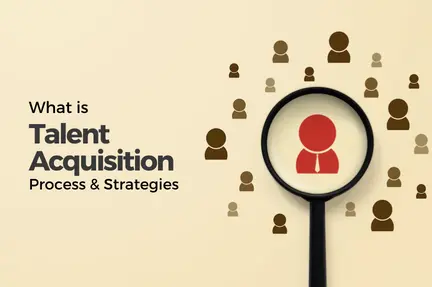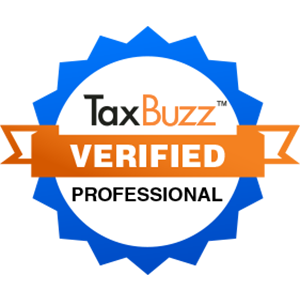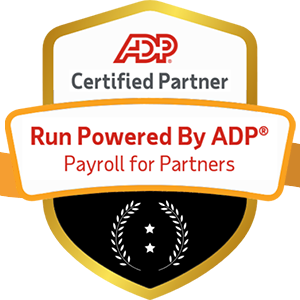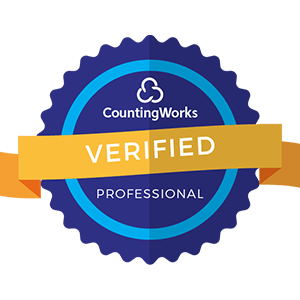
Talent acquisition refers to the process of identifying and acquiring skilled workers to meet your organizational needs. To fill unfilled jobs within a firm, the talent acquisition team is in charge of finding, obtaining, evaluating, and employing individuals.
The pillars of talent acquisition include employer branding, future resource planning, workforce diversification, and building a strong applicant pipeline.
In certain instances, a company's human resources division houses the talent acquisition team. In some organizations, talent acquisition functions independently while coordinating with HR.
Effective talent acquisition experts are proficient in employment branding strategies, candidate assessment, compliance and recruiting standards, and corporate hiring activities. These are just a few of the skill sets they possess.
Because talent acquisition recruiters make up the majority of a successful TA team, let's break down what it takes to be the best. To begin, being a people person is advantageous.
You're at ease creating and keeping relationships, especially with people from different occupations, industries, and personality types. People that excel in this job are also skilled at thinking big picture about their company's demands and how to meet them.
And, because you want to always be signing top talent, having sales experience may be quite beneficial because you're ultimately in the business of selling employment to potential prospects—and promising candidates to key stakeholders.
In certain circumstances, the talent acquisition team is part of the Human Resources department of a company. In others, Talent Acquisition is a separate department that collaborates with HR.
Effective talent acquisition experts must be proficient in sourcing tactics, applicant assessment, compliance, and hiring standards, as well as employment branding techniques and corporate hiring efforts.
These two are often confused. They have similar purposes in many ways: to place people in available positions.
The most important aspect of talent acquisition is recruitment, and some companies and vendors use the words interchangeably. However, while both talent acquisition and recruiting have the same purpose of filling unfilled jobs, there are significant variances.
The most significant difference is that recruiting focuses on the now, whereas talent acquisition focuses on the future.
Recruitment is primarily concerned with immediately filling an unfilled job, whereas talent acquisition considers the company's goals and takes the time to discover the applicant who best suits the business needs.
To get this broader view, talent acquisition teams examine prospective workers' existing talents as well as their possible future growth and function within the business culture.
Smaller distinctions stem from this fundamental distinction. Hiring new employees-
With the evolving tastes of the youthful workforce and the increased need for cutting-edge talents such as cloud competence, digital marketing, or artificial intelligence, the whole recruitment and talent acquisition process is undergoing tremendous upheaval (AI).
Treating applicants like customers is an important best practice for talent acquisition managers today. In other words, digital marketing lessons might be useful for developing a strong talent acquisition department.
From this perspective, let us look at the talent acquisition process.
Your objective as a manager of talent acquisition is to draw in the top candidates without actively looking for them. This entails creating a powerful employer brand, starting recruitment marketing initiatives, and monitoring incoming leads that will soon become hired candidates.
Create a smart recruitment website, promote referrals, and utilize candidate-focused content to tell a story about the firm to allow inbound recruiting in the talent acquisition process.
To attract customers, every successful business uses a clever combination of inbound and outbound marketing. As a result, you should actively promote a job posting by using social media, sponsored job postings, and automated email campaigns.
By writing thoughtful job descriptions, use this step to increase your recruitment efforts. Both inbound and outbound strategies will produce a large number of "leads" or candidates.
Currently, talent acquisition differs from conventional marketing. Not just anyone who wants to work for the organization will do. A candidate's performance will be checked, screened, and evaluated in light of several factors. This comprises:
Perhaps the most important factor for businesses today is culture. For instance, even though a candidate has the needed skill set, they might not be a suitable fit if your company values regular work hours and physical attendance and has a history of remote working.
The "conversion" of the candidate into final hiring occurs throughout the first three stages of the talent acquisition process. At this point, the individual recruiter takes control of the candidate's expertise and career path and bargains for compensation, perks, and other requirements.
Your application-to-recruit ratio will stay high, though, if your talent acquisition approach has contributed to building an appealing employer brand that aligns with the professional goals of the candidate.
A strategic onboarding process is included in a talent acquisition plan, however, it is handled by HR and direct managers. Preliminary training and ongoing evaluations are part of the onboarding process during the first few weeks.
This is perhaps the most important phase in the procedure since it guarantees that your talent acquisition method improves with each recruiting cycle. According to our study, 30% of new recruits quit their jobs within the first 90 days of employment!
In order to maintain involvement during this crucial early stage, regular reviews are required. Additionally, the feedback received from "converted" candidates might provide suggestions for how to enhance the recruiting process.
There is no "one size fits all" strategy in effective talent acquisition tactics.
The implementation process will vary depending on a variety of elements, such as the industry, firm size, brand name, financial limitations, job prospects, and competitive pressure.
The key takeaway from this is that you should be aware of the kinds of candidates you can employ and the resources you can use to do so before forming your approach.
But it's crucial to remember that every business will have a unique approach. However, a company's size is frequently a major factor in determining the TA approach that is employed.
A top-domain company with thousands of people, like Microsoft, Google, or J.P. Morgan, will probably find that expansion and retention are more difficult to manage than acquisition.
That's because you have access to a larger pool of brilliant people who are willing and eager to work for you.
In these situations, the talent acquisition approach must center on:
1. Keep enhancing the employer brand's image to attract more candidates for open positions.
2. Making sure that both new and veteran employees desire to stay with the organization. This may be done by providing various perks and rewards in addition to fulfilling and engaging job assignments, chances for professional advancement, a pleasant work atmosphere, and a sense of teamwork.
3. Entice top talent to join businesses that are rivals and peers in the sector.
4. Attend conferences, expos, and fairs to show off your leadership and knowledge.
5. Work with colleges and other educational institutions.
6. Sponsor a variety of workshops, training sessions, and professional events to identify talented students and recruit them or provide them with chances.
Mid-level firms, defined as those with 150 to 1000 people, might not offer an abundance of career opportunities to draw in skilled personnel.
This gives them another disadvantage when looking for exceptional employees. Additionally, they might not have a sizable wage and benefit war chest.
Two categories of mid-level businesses, those that are well-known and those that are still relatively new, might each have a well-thought-out talent acquisition plan. Some of the techniques might be:
1. Mid-level companies that view themselves as household names
Due to their smaller budget, it is difficult to compete with those more well-known businesses.
How could they possibly compete with them and attract great talent?
2. Mid-level companies that are still relatively unknown or just recognized locally or regionally
The plan will center on boosting brand recognition.
Any of the following four strategies might be used by smaller businesses and startups to find outstanding talent:
A hiring procedure is a crucial action that any business must perform. However, how your organization manages this process is very important since it may have a huge impact on both your business and personnel.
When hiring new employees, there are several factors to take into account, such as the time needed to fill a particular post and how much money should be set aside for recruitment.
With a solid recruiting company, you can find qualified candidates quickly. Analytics in hiring is a crucial component since they may be very helpful to you throughout this process.
1. Time to fill
This counts the days from the day a job is listed till a new hire accepts the position in order to fill an available position. You may see patterns in the amount of time that positions remain vacant based on their various teams by measuring the time it takes to replace them, and you can also spot holes in your procedures.
It takes 42 days on average to fill a vacancy. The time to fill, however, might range anywhere between 14 days and two months depending on the industry in which your firm operates.
For instance, employing a contact center agent will take longer than finding a skilled surgeon.
As a result, determining the time-to-fill statistic is crucial to setting up a talent acquisition team and identifying effective methods to follow up until the post is filled.
2. Rate of acceptance
The proportion of candidates that accepted your job offer, or your offer acceptance rate, reveals how appealing and competitive your employment offers are.
We are in a candidate-driven market right now, and counter offers are more common than ever. In most circumstances, accepting a counteroffer is a step backward for your career.
We consulted our recruiters for their insight on the pros and cons of accepting a counteroffer because we frequently work with applicants who struggle with this choice.
Another useful measure to monitor that can impact your offer acceptance rate is the rise in counter offers from prospects.
3. Filling Cost
This measure determines the cost of filling a certain post. Many resources are invested in acquiring new personnel, from enticing more applicants to funding the onboarding program.
While this statistic isn't critical for large, successful firms, it does have an impact on the budgets of certain smaller businesses.
In most circumstances, a shorter time to fill a post equates to cheaper expenses.
Hiring high-quality employees, on the other hand, justifies more spending. Although the cost-to-fill statistic should not be used to drive your recruiting process, it can assist you in directing it in the appropriate direction.
4. Interview-to-hire conversion rate
Another statistic that helps you to assess the quality of hire inside your firm is the interview-to-hire ratio. This indicator essentially estimates how many applicants that are interviewed for the post are eventually hired.
If you want to examine the sourcing and screening phases of the recruiting process, this measure is a great place to start. A high interview-to-hire ratio indicates an effective hiring procedure.
5. Acceptance rate of offers
This measure computes the number of persons who accept a job offer from an organization. Low acceptance rates might indicate that your offerings are too sluggish or not competitive enough, whilst high acceptance rates indicate that your offers are superior to those of other comparable firms.
Naturally, this measure is also affected by the industry. Hiring call center agents, for example, must be completed promptly since the applicants are likely to receive a comparable job offer from a competing organization.
Top prospects will likely choose a firm that contacts them first if your recruitment staff takes too long to make an offer.
1. Recruitment and Hiring Tools
These tools aid in the automation and simplification of the recruiting process. This is accomplished through the generation of interest, the screening of applicants, the conduct of interviews, and the employment of personnel.
In actuality, due to their tremendous assistance in the recruiting process, these tools or recruitment software are the ideal helpers to all HR workers. They facilitate the whole employment process, maximizing efficiency with less effort.
An award-winning software, which is known for its human capital management features, ADP Talent is an all-in-one recruitment tool that is loved by HR professionals. The software claims to have a best-in-class user-interface.
From performance optimization to easy employee monitoring, to track the entire employee life cycle with the organization, ADP software helps in all this. Besides this, the software has also got aspects like Payroll and Talent management covered for you. It’s like everything is available in one central place.
2. Software for conducting interviews
Consider employing interviewing software if you are hiring for a remote position or have a large number of applications. This allows applicants to record their responses to questions and submit them online.
The pre-screening interview can be conducted through video, audio, or text. Recruiters can easily examine critical question replies and decide which prospects to invite to an in-person interview.
3. Tool for tracking applicants
At each stage of the recruiting process, an applicant tracking system (ATS) captures candidate information in a database and coordinates diverse application materials with identifying information.
An applicant tracking system (ATS) automated resume screening by highlighting resumes, cover letters, and other application materials that contain or omit relevant keywords. They enable numerous employees within a firm to be aware of which candidates have been processed, hence boosting company-wide communication.
4. Tool for onboarding
Some businesses continue to underestimate the significance of the onboarding process. This honeymoon phase sets the tone for an employee's whole career at your organization.
If they believe you've covered everything within the first few months, from training to business culture, they'll be more confident in their abilities to accomplish their job. They'll also have a more favorable initial image of your organization, making exceptional new hires less likely to depart over the vital first few months.
Onboarding software automates the process, relieving the management of the burden and allowing new workers to effortlessly download the required program to their cellphones and finish training whenever they have the time.
1. Is Talent Acquisition and HR the same?
Talent acquisition oversees the pre-onboarding phase, while HR manages the post-onboarding stages.
2. What is the role of a Talent Acquisition Manager?
Employees are hired, trained, and retained by talent acquisition managers. Professionals in this role must have good interpersonal, organizational, and communication skills in order to source top talent and keep employees productive and pleased.
3. What are the 3 R’s of Talent Acquisition?
To guarantee that its most valuable asset, the personnel, becomes stronger every day, a business should invest in the three R’s- Recruit, Reward, and Retain.


